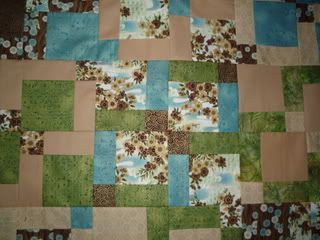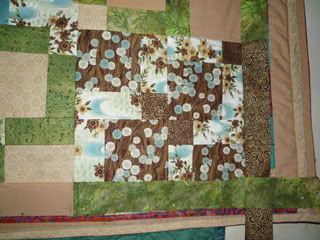This is another older but rather fun quilt; I like its high graphic quality. The fact of it being made with a high loft batting (thicker filling, "pouffier", as it were) helps it look 3-dimensional, that effect is bolstered by the particular way I quilted it.
Though this is a traditional quilting pattern, the Artist who taught it used a less than traditional manner of assembling it. It went together surprisingly quickly & more easily than it would appear, quite fun.
Funny observation, I didn't realize it until after I'd made this quilt, but each of the five (5) fabrics in it is a botanical print, every single one! To me, it's a funny coincidence as I'm an amateur plant collector, whose collection at times has numbered more than 150 plants (in a Brooklyn studio apartment, no small feat). Even how I chose to quilt the border (the teal/white background print), sort of reminds me of a garden trellis, so it seemed entirely appropriate.
Then again, nature has always been a huge source of design & color inspiration for artists going back through time. An example that comes to mind are 'toile de jouie', the traditional monochromatic French fabrics featuring pastoral scenes, dating back to the Industrial Revolution which allowed for the first mass production of printed fabrics ('toile' for short).


